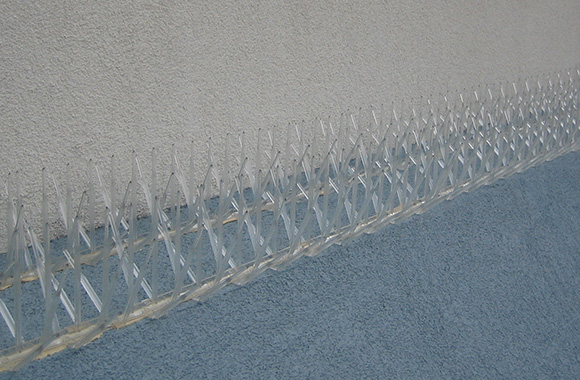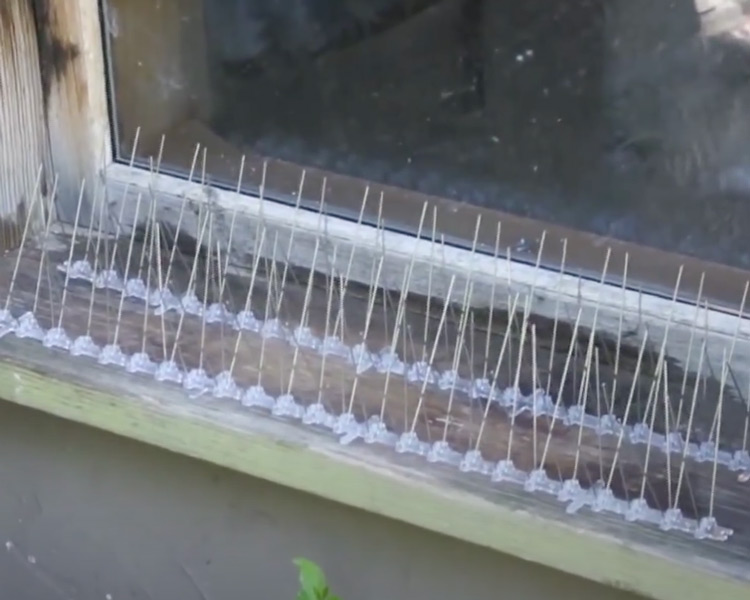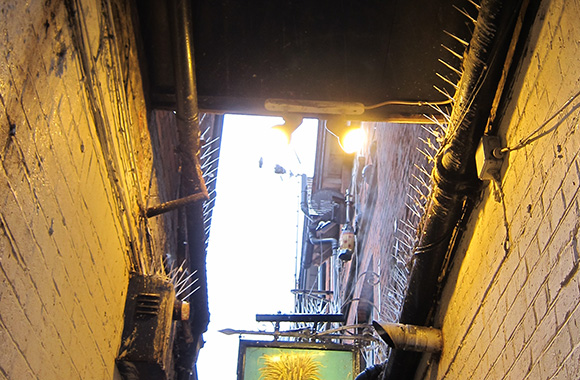About Bird spikes, uses and installation
Birds roosting in building and commercial spaces are a nuisance for more than one reason. Although the idea of suiting tweeting might seem adorable at first, what the majority of estate owners find impossible to handle are the constant noise and health threats that birds pose. On the one hand, the presence of a large number of birds might be unsettling to some, while other might find constant sound of bird calls to be overwhelming. If birds occupy commercial spaces, particularly those that store food, they can pose a serious health threat. They can pollute products and drinking water with their feces, which is also dangerous to inhale for anyone who uses the space. To anyone experiencing bird invasions for the first time, the problem might seem impossible to solve. What further complicates the issue is, that a lot of bird species are protected by law against killing and disturbing, especially while laying and hatching periods last.


Methods of deterring birds, like spikes and netting, have a sole purpose to keep the birds away without harming. Not only from a legal and environmental perspective, is killing birds in large numbers also inhumane and necessary. Bird spikes are often used as a solution in keeping birds away from spaces that are normally hard to reach, or too large to net. They are amongst the humane deterring methods, since they don’t cause the animal any pain or distress. Compared to other deterrents, like shiny objects, artificial animals, electronic boxes and shock tracks, bird spikes seem to be a more humane solution. Bird spikes will simply not allow a bird to land on to the area, without scaring it or causing it any distress. When it comes to this particular method of deterring birds, there are several important facts to know before you proceed to install them. In order for these to be effective, they not only need to be installed properly, but they also need to be used for the adequate species of birds.
Bird spikes are a tool that consists of long, pointed spikes that are lodged into the basis. They are normally made out of steel, metal or plastic. Bird spikes are most often installed in areas that are either too large to cover with bird nets, or too inaccessible to use other deterrents in. open spaces, like tall and long fences surrounding commercial and industrial buildings, are normally hard to protect against birds using any other method. Fogging in this case simply doesn’t make sense, and setting up nets and other tools like artificial animals simply might not be appropriate for these types of spaces. Additionally, spaces like balconies, soffits and many other that are hard to cover with other deterring tools, are much easier to bird-proof by installing bird spikes. Once the spikes are set up in these areas, birds will no longer be able to land, because the spikes are too thin and sharp. Eventually, birds will lose interest in these areas.
Bird spikes serve to deter almost all of the bird species, including pigeons, sparrows, crows, starlings, seagulls, and many other. This means that birds spikes are appropriate to use in both open and closed areas, as well as areas where one might themselves in a problem with marine bird roosting. In addition, bird spikes are quite simple and easy to install, and they are also very affordable, long-term investment in the safety and comfort of an estate. These, however, don’t come without serious shortcomings. The biggest amongst the problems include piling up of bird feces in the spikes. While hovering over the deterrent and trying to find a place to land, birds will drop substantial amounts of feces. It is possible that the feces completely fills up areas of the spikes, to the point where birds will be able to land again. This means that you are either going to have to change them from time to time or clean them regularly.
Bird spike installation is a quite simple process. First, you need to purchase an adequate amount of spikes from a supplier. To know just about how much of these you will need, you need to know the complete length of the area you wish to cover. After you decide on the amount of spikes you need, you can choose between different types of spikes that vary in size and material. Spikes are usually made out of either plastic, steel or metal. The difference is usually in the durability of the material, meaning that you can expect the steel ones to last you the longest. The installation process consists out of drilling the basis of the spikes and screwing them into the surface. After this, the only thing you need is to make sure that the screws are sturdy and that spikes are not moving around. Depending on the material from which they are made of, bird spikes can last for longer or shorter periods of time.

Bird spike strips are, just as the name suggests, strips of spikes that are designed to be used to control birds. They do not harm the birds. They are designed to prevent birds from landing on window sills and ledges, rooftops, fence or wall tops, and other building ledges and flats.
You - the homeowner - can install them. They are best installed by a bird removal specialist, who will know where to put them, what types to use, and how to install them to get the best results.
You will find both plastic and metal varieties online, in an assortment of shapes and sizes. The right one for you will depend on your specific circumstances — the area you need to protect, the species of bird that’s becoming a nuisance, aesthetic preferences, and more.
You will need to find the right size and style of spike strip for your specific bird problem. Larger birds such as seagulls will need larger spike strips than smaller birds, like starlings. Buying the wrong size or style will result in the strip failing and potentially harming birds. This can land you in hot legal water, especially if you injure a bird that is protected on either a state or federal level, of which there are many.



